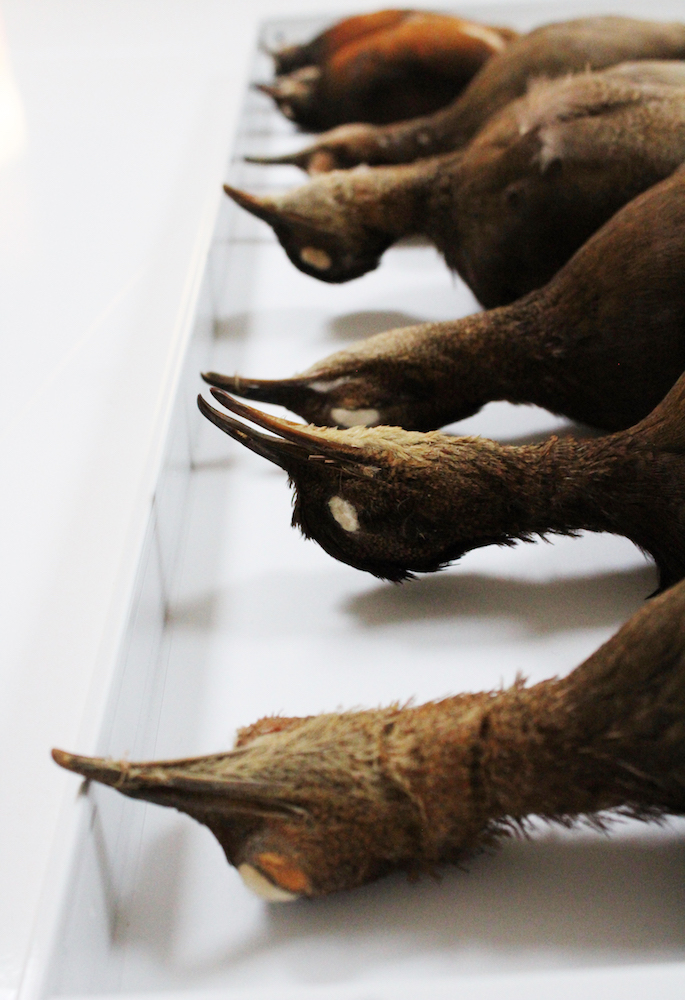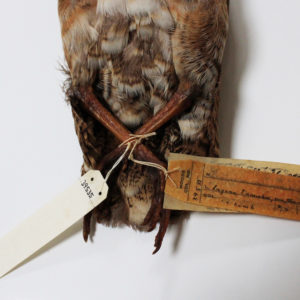
Tucked away behind the BioScience building in the new Anderson Environmental Center, the Moore Lab of Zoology holds 39,000 specimens of Mexican birds — the world’s largest collection, due to the efforts of Robert T. Moore and his partner Chester C. Lamb. A team of researchers working on the Mexican Bird Resurvey Project are looking at the distributions and genomes of different species at 50 of the sites Lamb collected from between the 1930s and 1950s. By comparing the genetics of the birds nearly 100 years ago to the birds now, the team, which includes undergraduate students at Occidental and other institutions, hopes to discover how habitat changes have impacted the birds.
According to Ryan Terrill, a postdoctoral student who recently started working on the Mexican Bird Resurvey Project, the work is especially important since birds can be indicators of the overall wellbeing of the ecosystem. Terrill said the changes in DNA may indicate a variety of things, like changes in habitat due to deforestation, farming or a shift in the monsoon season. Since the birds’ collection during the 1930s through 1950s, Mexico saw massive changes, including deforestation and cattle ranches expanding, that have impacted these birds, Terrill said.

John McCormack, biology professor and director and curator of the Moore Lab of Zoology, revitalized the collection through a series of projects regarding DNA research, the most recent of which is the Mexican Bird Resurvey Project.
“I’d say the collection for a long time was under the radar and sort of fell off the map of zoology and biology,” McCormack said. “What we’ve been trying to do more recently is bring it more out into the open and make it visible as a resource for the community.”
The Mexican Bird Resurvey Project also focuses on creating meaningful and lasting connections with museums and individuals who are researching these birds in Mexico, Terrill and McCormack said. The project is currently on its second year out of the five years funded by the grant, but according to McCormack, professors, researchers and students intend to continue the project even after the five years are up. Terrill said he came to work in the Moore Lab because it possesses the largest collection of Mexican birds in the world.
“One of the main outputs we’d like to happen is facilitation of local research. We’re really doing our best to make this as collaborative as possible with Mexican researchers and involve them as much as possible,” Terrill said. “We are doing some of the re-surveying ourselves but also making it highly collaborative.”
According to McCormack, his responsibilities as director of the Moore Lab of Zoology include mapping out the big research projects that take place at the lab and leading teams of students and staff to carry out the steps of the project, such as resurveying areas in Mexico. The team plans to visit 15 of the sites Lamb collected from throughout the course of the project.

Terrill said his postdoctoral research brought him to the Moore Lab due to its unique collection of birds.
“As we’re starting to analyze the data, there are some birds that seem to be declining that we didn’t really know were declining,” Terrill said. “Looking at the data preliminarily, there are a few species we didn’t expect to be declining as much as they are, so hopefully we’ll be able to go back and take a closer look at those.”
The Moore Lab also hosts many research opportunities for students at Occidental interested in genetics. One such student is biology major Jackson Caudle (junior), who has been working in the Moore Lab since his sophomore year. According to Caudle, working at the lab allows him to practice computational techniques and lab techniques such as taking DNA from a piece of tissue or blood. Throughout his time working in the Moore Lab, Caudle said, he has taken part in different forms of biological research that helped him discover his interest in genetics.
“There’s an industry side and educational side [to genetics], and the educational side is what the Moore Lab focuses on, like phylogenetics and helping species get protected and things,” Caudle said. “The industry side is like 23andMe or healthcare. I see myself leaning more towards the industry side of going into healthcare, going into helping people. But I think they’re intertwined.”
According to Caudle and McCormack, the Moore Lab of Zoology is open for any student to partake in research as long as they are willing and enthusiastic about the projects. Over the nine years of working in the lab, McCormack has mentored more than 80 students, and he said that students do not need to be STEM majors to participate in research.
“All across the college, we’ve collaborated with the history department, we’ve worked with the art department,” McCormack said. “We can find things for all kinds of students to do.”
According to McCormack, the Moore Lab of Zoology offers a multitude of options for students, from picking up a few lab techniques to being a part of bigger projects like the Resurvey Project.
“It’s so crazy how you walk in and you feel like you’re in a state-of-the-art genetic lab,” Caudle said. “So if you have any interest, come on in and take a tour, because you’ll never know what you love.”
The Anderson Environmental Center, which houses the Moore Lab and other collections and labs such as the Cosman Shell Collection and the marine biology lab, is currently undergoing construction to provide an enhanced experience of teaching, research, and learning. This includes various displays for the birds and a new genomics lab that will provide a home for continued research. The renovations are expected to conclude early 2020.
![]()


































